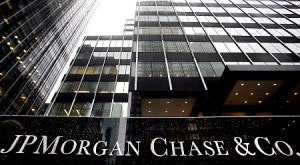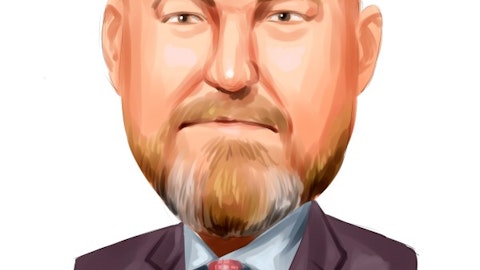Sheila Bair, former Chairperson of the FDIC, has been in the news this week after writing an article for Fortune magazine where she argues that the era of “too big to fail” banks is over.
The notion of a stable financial system with diversified risk and effective regulatory checks and balances is certainly noble — but is there any evidence to support the former Chairperson’s idealistic conclusions?
Point 1: The Big Banks are even bigger
At the end of 2007, JPMorgan Chase & Co. (NYSE:JPM) touted itself in its annual report as a “leading global financial services firm with assets of $1.6 trillion.” Fast forward 5 years to Dec. 31, 2013 and JPMorgan has grown by nearly 50% to $2.4 trillion in total assets.

Bank of America Corp (NYSE:BAC) and Citigroup Inc. (NYSE:C) have each purposefully shrunk to improve balance sheet metrics, but the four largest banks (add JPMorgan Chase & Co. (NYSE:JPM) and Wells Fargo & Co (NYSE:WFC)) have still net on net grown substantially since 2007 and even 2010 when Dodd Frank was first passed.
Point 2: The Markets still price in an implied government guarantee
Across the industry, big banks pay less for their liabilities than smaller banks.
According to the FDIC’s Quarterly Banking profile data, banks with assets greater than $10 billion had a cost of funds of 0.45% at Dec. 31, 2012. This is 26% less than banks with total assets between $1 and $10 billion and 34% less than banks with total assets between $100 million and $1 billion.
A comparison to Dec. 31, 2007 is even more telling. At that time the largest banks paid more for cost of funds than the smaller banks. Average cost of funds for the largest banks was 3.53% versus 3.39% for those with assets less than $10 billion.
This gives the largest banks a tremendous competitive advantage. They can price their loan yields lower and still maintain net interest margins, it improves their profitability, and it boosts both return on equity and return on assets.
JPMorgan Chase & Co. (NYSE:JPM) currently pays 2.06% on its long term debt and just 0.20% on its short term commercial paper as of Mar. 31. Bank of America Corp (NYSE:BAC) paid just 0.30% on average for its commercial paper in 2012. Compared to the 10 year Treasury at 1.75% and the 1-month Treasury at 0.06%, the markets are pricing in virtually no additional risk at the biggest banks relative to the federal government.
The conclusion is clear — the markets are pricing the big banks at levels very near that of the “risk free” Treasuries, because the federal government is still implicitly standing behind the big banks.
Point 3: Dodd Frank has fallen victim to Capital Hill Re-Writes
The Dodd Frank legislation was passed nearly 3 years ago and is still being negotiated, revised, rewritten, and changed today. The original draft called for over $400 million in annual fees for each of the nation’s largest banks.
On Monday, the Fed revealed its final plan to implement these fees, including details of the final formula to be used to calculate the fee. Under the new formula, Citigroup Inc. (NYSE:C), for example, would be charged $28 million annually as a tax for being considered “too big to fail.” For context, Citigroup reported revenue of over $20 billion just for the 1st quarter of 2013.
Bair stated in an interview on Tuesday that “There’s an explicit ban on future taxpayer bailouts in Dodd-Frank,” but she then points to the new government controlled bankruptcy process as justification of her point.
The problem though, is that if Citigroup Inc. (NYSE:C), JPMorgan Chase & Co. (NYSE:JPM), Bank of America Corp (NYSE:BAC) or another mega bank finds itself in front of a bankruptcy court, then it’s already too late. The new bankruptcy processes will provide a structured way to unwind the business, but the shock waves in the market will travel in front of the process, not behind it.
An unfortunate conclusion
All this, it seems, paints an unfortunate picture.
The big banks are still very, very big (much bigger in fact than they were in 2007). The markets still price in significant safety at the largest banks relative to their smaller competitors which gives a distinct competitive advantage and incentivizes financial institutions to grow as much as possible. Regulations, at least at this point in time, appear to be emerging from the negotiation process on Capital Hill toothless, the victim of political posturing and very effective industry lobbying.
I am in agreement with Ms. Bair that a system with 3 or 4 “too big to fail” players concentrates far too much risk in the hands of so few companies. But the evidence today indicates that we have failed to take action on the lessons learned from the Financial Crisis. Any talk today of a meaningfully reformed system is still just wishful thinking.
The article Sheila Bair Calls End of “Too Big To Fail” originally appeared on Fool.com and is written by Jay Jenkins.
Copyright © 1995 – 2013 The Motley Fool, LLC. All rights reserved. The Motley Fool has a disclosure policy.

